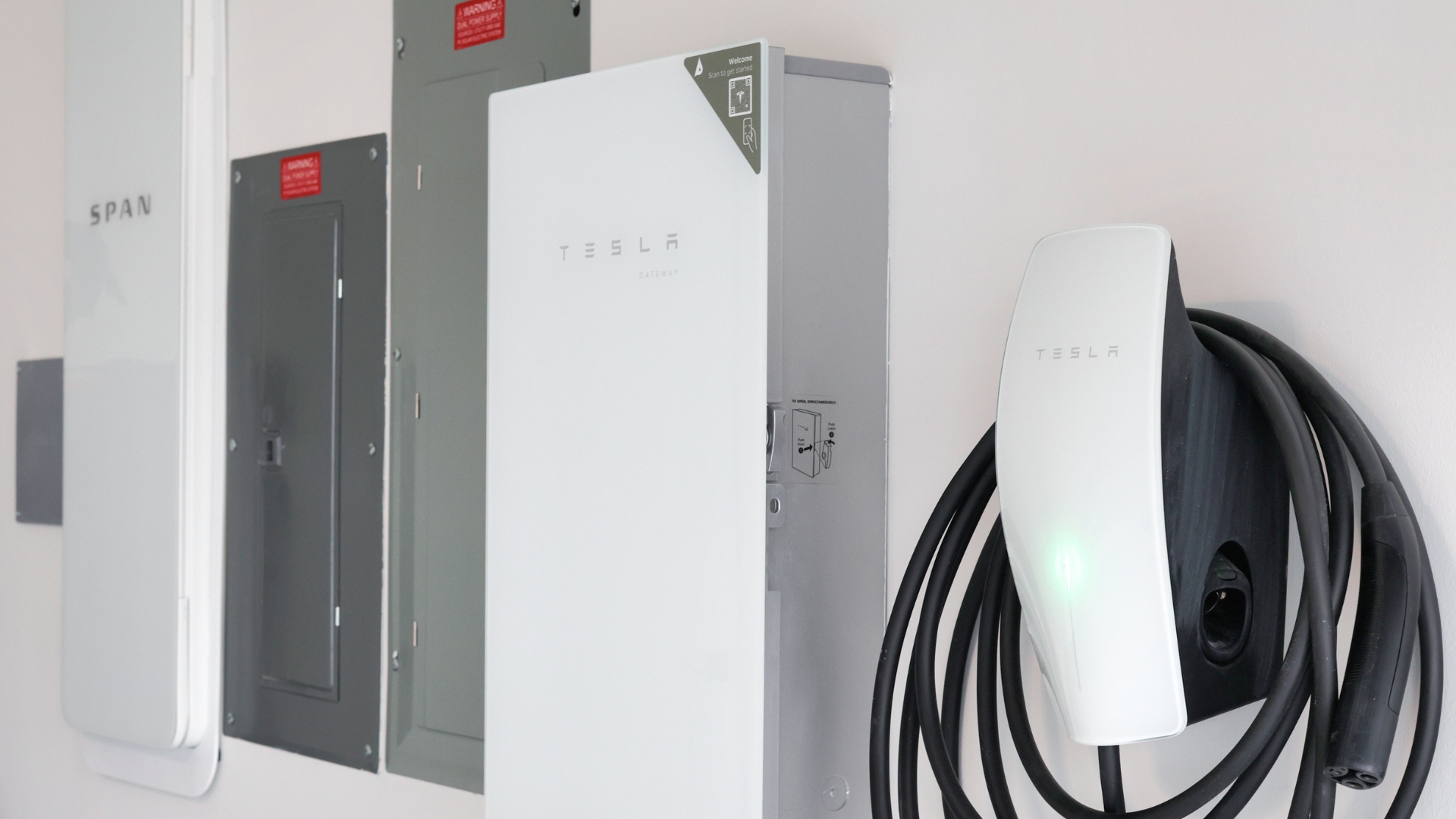Regulated vs Deregulated Energy Markets in Texas Explained
Many Texas homeowners wonder why some can choose their electricity provider while others cannot. The answer lies in the distinction between regulated and deregulated energy markets, which greatly influence energy pricing, flexibility, and solar options. In this blog, we’ll break down these two markets, explain how they operate, and provide Texas homeowners with all the insights needed to make informed energy decisions.
It all started in 1999, when Texas enacted Senate Bill 7, officially beginning the de-regulation process of the Texas energy market. Today, Texas stands as the largest de-regulated energy market in the country, with hundreds of Retail Energy Providers (REPs) competing in a completely restructured market than the one we knew 20 years ago. But here’s something that might surprise you, about 15% of Texas homeowners are still in regulated markets. In East Texas, for example, home to the state’s largest regulated market, over half a million residents between the Golden Triangle and the Greater Houston metro area rely on regulated utilities. So, what does all this mean for you, especially if you’re a homeowner considering solar energy? Let’s break down the differences between regulated and deregulated energy markets, the pros, the cons, and how they impact your energy choices.
Overview of Regulated Energy Markets
In regulated markets, the electricity supply chain is managed by a single utility company, which handles everything from power generation to transmission, distribution, and retail services like billing and customer support. These utilities often operate as monopolies, meaning homeowners do not have the option to choose their provider. The rates charged by these companies are set and approved by governing bodies such as the Public Utility Commission of Texas (PUCT) or local boards, ensuring a consistent pricing structure across the service area.
One of the key advantages of regulated markets is stability. Since the rates tend to remain fixed and change infrequently, homeowners can enjoy predictable energy costs. The uniform pricing across the entire service area means that all customers pay the same rate. This predictability makes budgeting for energy easier. Notable regulated utilities in Texas include Entergy Texas, Sam Houston Electric Cooperative, CPS Energy in San Antonio, and Mid-South Synergy.
Pros of Regulated Markets
Many homeowners prefer regulated markets for their price stability, lower rates, and consumer ownership, with strong regulatory oversight to ensure fair pricing.
- Price Stability and Predictability: Fixed rates make budgeting easier with minimal fluctuations, and long-term forecasting allows homeowners to predict future expenses accurately.
- Lower Rates: Per-kilowatt-hour (kWh) rates are often lower than those in deregulated markets, providing cost savings for homeowners.
- Consumer Ownership and Influence: A large portion of the regulated energy market in is comprised of either Co-ops or Municipality -owned Utilities (MOU’s), both of which are non-profit structured companies. Important to remember, Co-ops are owned by the customers they serve, whereas MOU’s are both owned and regulated by the municipality, which is often represented by customers it serves.
- Structure and Oversight: Being fully vertically integrated Utilities, Co-ops and MOU’s (which comprise a large portion of the regulated market’s energy providers) are approved by the Public Utility Commission of Texas (PUCT), preventing price gouging, and co-ops and MOUs often operate as non-profits, reducing operational costs.
Cons of Regulated Markets
Despite their benefits, regulated markets have some drawbacks, including limited provider choice, slower adoption of new technologies, and potentially lower solar incentives.
- Lack of Choice: The monopoly structure limits options, as customers cannot switch providers or negotiate better rates and terms.
- Limited Innovation: Regulated markets typically offer only standard plans, with less adoption of newer technologies like time-of-use rates or Virtual Power Plants (VPPs).
- Potential for Lower Solar Incentives: Buyback rates for solar energy are often based on avoided costs, which may be less favorable for solar homeowners compared to deregulated markets.
Overview of Deregulated Energy Markets
Deregulated markets in Texas have fundamentally changed the traditional utility structure by separating it into three distinct components: generation, transmission and distribution, and retail services. In this system, independent companies are responsible for generating electricity, while utilities such as CenterPoint Energy and Oncor manage the transmission and distribution (TDU/TDSP), maintaining the grid infrastructure. Retail Electric Providers (REPs) purchase electricity at wholesale prices and sell it to consumers.
One of the most significant advantages of deregulated markets is the ability to choose your electricity provider. With over 100 REPs competing for customers, homeowners have access to a variety of plans, including fixed-rate, variable-rate, prepaid, free nights/weekends, and solar buyback options. Rates in deregulated markets fluctuate based on real-time wholesale energy prices, making it a more market-driven environment. Some well-known REPs in Texas include Reliant Energy, Green Mountain Energy, Chariot Energy, and Just Energy.
Pros of Deregulated Markets
With more states moving toward a more deregulated approach, many homeowners are enjoying the switch for several reasons, including increased choice and flexibility in their energy plans.
- Freedom of Choice: Homeowners can switch providers and shop for the best rates, promoting competition for better pricing and services.
- Diverse Plan Offerings: A range of options like prepaid, time-of-use, free nights/weekends, and solar buyback plans cater to different needs.
- Innovation and Flexibility: Features like time-of-use plans, virtual power plants (VPPs), and price-matching guarantees offer homeowners more flexibility and potential savings.
Cons of Deregulated Markets
With more states moving toward a more deregulated approach, many homeowners are enjoying the switch for several reasons, including increased choice and flexibility in their energy plans.
- Market Volatility: Prices can fluctuate drastically, especially during high-demand periods or crises, such as Winter Storm Uri in 2021, making long-term budgeting harder.
- Complexity and Due Diligence: With many plan choices, homeowners must carefully research to avoid hidden fees or unfavorable terms.
- Potential for Price Gouging: The competitive nature of the market can lead some providers to engage in exploitative practices, raising the risk of price hikes.
What This Means for Solar Homeowners
For homeowners considering solar energy, both deregulated and regulated markets offer unique opportunities and challenges, each with its own set of advantages and drawbacks.
Advantages In Deregulated Markets
- Multiple Solar Buyback Options: Retail Electric Providers (REPs) offer a variety of buyback rates and structures, allowing homeowners to choose plans that best suit their needs.
- Competitive Rates: Homeowners have the potential to receive higher compensation for excess energy, depending on the REP and their chosen plan.
- Innovative Energy Solutions: Homeowners can take advantage of time-of-use plans to charge batteries or electric vehicles during low-cost periods, while virtual power plants (VPPs) allow them to monetize battery storage by supplying energy back to the grid during peak times.
- Flexibility: Short-term contracts allow homeowners to adjust and adapt to changing market conditions, offering more control over their energy decisions.
Challenges In Deregulated Markets
- No True Net Metering: Buyback rates in deregulated markets do not always account for transmission and distribution charges, meaning homeowners may receive less compensation for excess energy.
- Frequent Monitoring Required: Short-term contracts necessitate regular attention to avoid unfavorable changes upon renewal.
- REPs Not Obligated to Buy Back Energy: Only certain plans offer solar buyback options, so homeowners must carefully choose a plan that includes this feature.
Advantages In Regulated Markets
- Policy Stability: Solar buyback policies in regulated markets tend to remain in place for extended periods, providing homeowners with long-term consistency.
- Grandfathered Plans: Early adopters may benefit from favorable solar terms indefinitely, as in the case of Entergy’s original net metering program.
- Potential for True Net Metering: Some utilities, such as Mid-South Electric, offer 1:1 net metering, crediting homeowners at the full retail rate for excess energy produced.
- Regulatory Protections: The Public Utility Commission of Texas (PUCT) mandates that utilities pay at least the avoided cost for excess energy, offering some level of compensation for homeowners with solar systems.
Challenges In Regulated Markets
- Lower Buyback Rates: Buyback rates in regulated markets are typically based on avoided costs, which often provide less compensation than the market rates found in deregulated areas.
- Limited Plan Options: Regulated markets generally offer fewer opportunities to take advantage of time-of-use or VPP programs, limiting the ways homeowners can maximize their solar investments.
- Monopoly Limitations: In regulated markets, homeowners cannot switch utilities to seek better solar incentives, restricting their ability to shop around for more favorable terms.
In conclusion, understanding your energy market is key, especially for solar homeowners. Regulated markets offer stability and lower rates but fewer solar incentives, while deregulated markets provide more options and innovation, though with price volatility. Staying informed will help you make the best decisions for your energy needs and savings.
Frequently Asked Questions (FAQ)
Are All Regulated Markets Permanent?
No, markets can transition over time. For instance, Lubbock Power & Light is currently moving from a regulated market to a deregulated one, similar to how Houston transitioned more than two decades ago.
Which Market Is Better Suited for Solar?
It depends on your needs and location:
- Regulated Markets: Often have the best net metering plans, such as those from Mid-South Electric.
- Deregulated Markets: Provide more options and potentially better buyback rates.
Pro Tip: Evaluate your options based on your specific utility provider and available solar programs.
How Can I Maximize My Solar Investment?
Here’s how to get the most out of your solar system:
- Understand Your Market:
Determine whether you live in a regulated or deregulated area. - Research Plans Thoroughly:
- In deregulated markets, use resources like Texas Power Guide to compare solar buyback plans.
- In regulated markets, reach out to your utility provider to explore their solar programs.
- Monitor Contract Terms:
Be mindful of contract durations and renewal conditions. - Consider Battery Storage:
Batteries can boost savings, especially in markets offering Virtual Power Plants (VPPs) or Time-of-Use (TOU) rates.
Ready to Explore Your Solar Options? Contact us today for personalized advice tailored to your energy market. We’re here to help you navigate the complexities and make the most of your solar investment.







